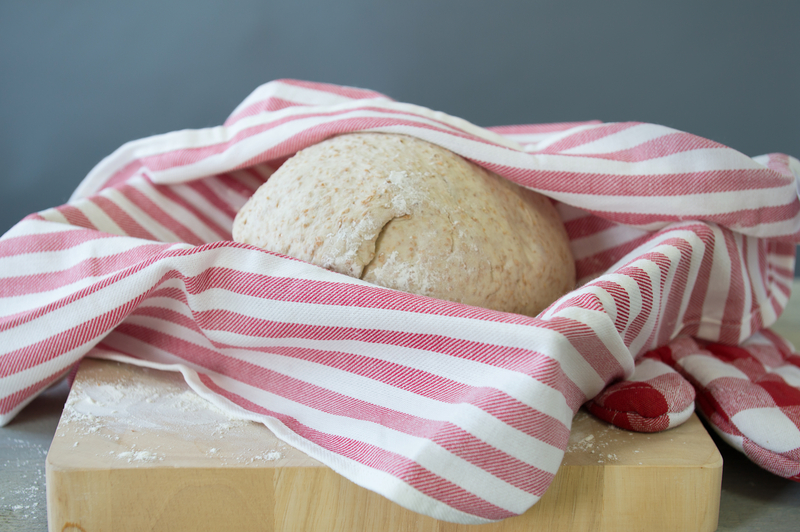 Breadmaking is both an art and a science, and one of the critical steps in creating delicious, fluffy loaves of bread is allowing the dough to rise properly.
Breadmaking is both an art and a science, and one of the critical steps in creating delicious, fluffy loaves of bread is allowing the dough to rise properly.
The process of dough rising, also known as fermentation, is essential for developing flavor, texture, and structure in your bread.
However, determining the ideal rise time can be a bit tricky, as it depends on various factors.
In this article, we’ll explore the factors that affect how long bread should rise and provide some general guidelines to help you achieve the best results.
The Type of Bread
The type of bread you’re making plays a significant role in determining how long it should rise.
Different bread recipes call for varying rise times.
Here are some common types of bread and their typical rise times:
- Quick Breads
Quick breads, like banana bread or soda bread, often use chemical leavening agents such as baking powder or baking soda.
These breads require minimal rising time, usually around 15-30 minutes, or even none at all.
- Yeasted Breads
Yeasted breads, including white, whole wheat, and sourdough, require longer rise times.
Depending on the recipe and the ambient temperature, the first rise (bulk fermentation) can take anywhere from 1 to 2 hours or more.
The second rise (proofing) is typically shorter, around 30 minutes to 1 hour.
The Yeast
 The type of yeast you use affects the rise time.
The type of yeast you use affects the rise time.
There are three primary types of yeast:
- Active Dry Yeast
This yeast requires proofing in warm water before adding it to the dough.
It has a longer rise time compared to instant yeast.
- Instant Yeast
Instant yeast can be added directly to the dry ingredients and has a shorter rise time compared to active dry yeast.
Bread dough made with instant yeast rises faster.
- Sourdough Starter
Sourdough bread relies on wild yeast and lactic acid bacteria naturally present in the sourdough starter.
The rise time for sourdough can vary widely, from 4 to 12 hours or even longer, depending on the starter’s activity and recipe specifics.
Ambient Temperature
The temperature of your kitchen or baking environment plays a crucial role in dough fermentation.
Warmer temperatures speed up the rise, while cooler temperatures slow it down.
Here’s a general guideline:
a. Warm Kitchen (75-80°F or 24-27°C): Bread dough will rise faster in a warm environment, so you may need shorter rise times.
b. Room Temperature (68-72°F or 20-22°C): This is the ideal temperature range for most bread recipes. Expect moderate rise times.
c. Cool Kitchen (60-65°F or 15-18°C): In a cooler kitchen, dough fermentation will be slower, and you’ll need to extend the rise times.
Recipe Specifics
 Every bread recipe can come with its unique set of recommended rise times, so it’s crucial to adhere to the instructions in your selected recipe for optimal results.
Every bread recipe can come with its unique set of recommended rise times, so it’s crucial to adhere to the instructions in your selected recipe for optimal results.
Keep in mind that factors such as the dough’s hydration level, your kneading technique, and the incorporation of pre-ferments like poolish or biga can also exert an influence on the overall rise times
Consider These Perfect Bread Baking Companions
When it comes to mastering the art of bread baking, having the right tools can make all the difference.
We’ll introduce two exceptional items to elevate your bread-making experience.
- Oval Proofing Basket Set by Bread Story
The Oval Proofing Basket Set by Bread Story is a handmade, unbleached natural cane banneton brotform measuring 12 x 5.5 inches. This artisanal bread-baking kit allows your dough to rise gracefully, resulting in a delectable crispy crust and tender crumb. Complete with a cloth liner for easy release and a bread baking e-book course, this set is perfect for shaping oval loaves and honing your baking skills.
- Round Banneton Proofing Basket Set
Crafted from unbleached natural cane, the Round Banneton Proofing Basket Set is your secret to achieving bakery-quality, crusty bread with ease. This handmade banneton brotform ensures excellent airflow during proofing, resulting in a perfectly crispy crust. The set also includes a washable cloth to prevent sticking and facilitate the effortless release of your dough. Perfect for those who crave professional-quality bread in the comfort of their own kitchen.
Enhance your bread-baking journey with these two exceptional tools.
The Oval Proofing Basket Set and the Round Banneton Proofing Basket Set, both made from unbleached natural cane, offer the perfect environment for your dough to rise, resulting in professional-quality bread with crispy crusts and tender crumbs.
To bake bakery-worthy loaves at home, cloth liners and washable cloths are indispensable companions for any aspiring home baker.
Bottom Line – How Long Should Bread Rise For?
 The question of how long bread should rise for doesn’t have a one-size-fits-all answer.
The question of how long bread should rise for doesn’t have a one-size-fits-all answer.
It depends on the type of bread, the yeast used, the ambient temperature, and the specific recipe.
Experimentation and experience are your best guides.
By paying attention to these factors and observing your dough’s behavior, you’ll become a skilled bread baker capable of producing perfectly risen loaves every time.
So, roll up your sleeves, gather your ingredients, and let your dough rise to greatness!




